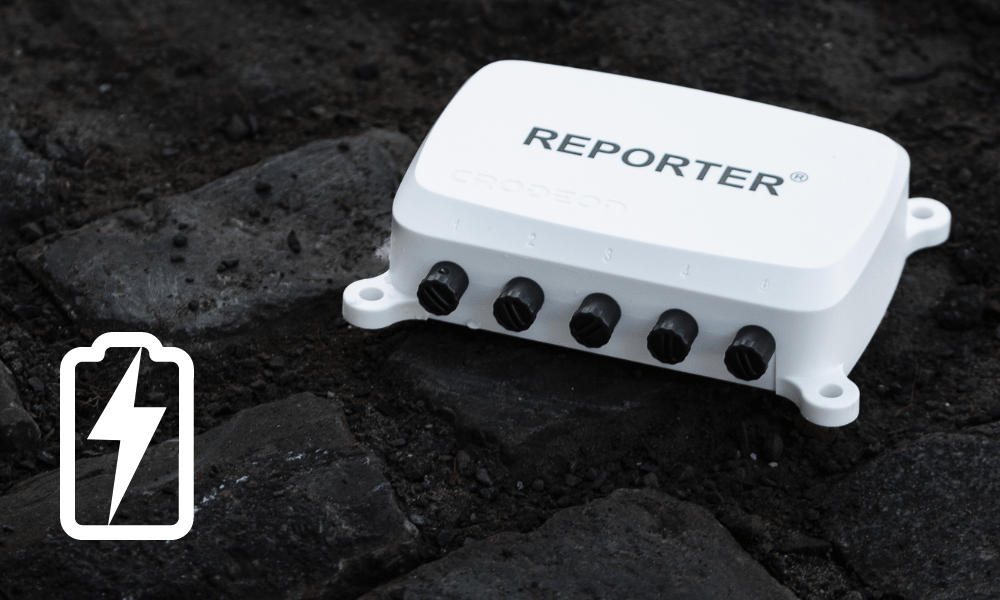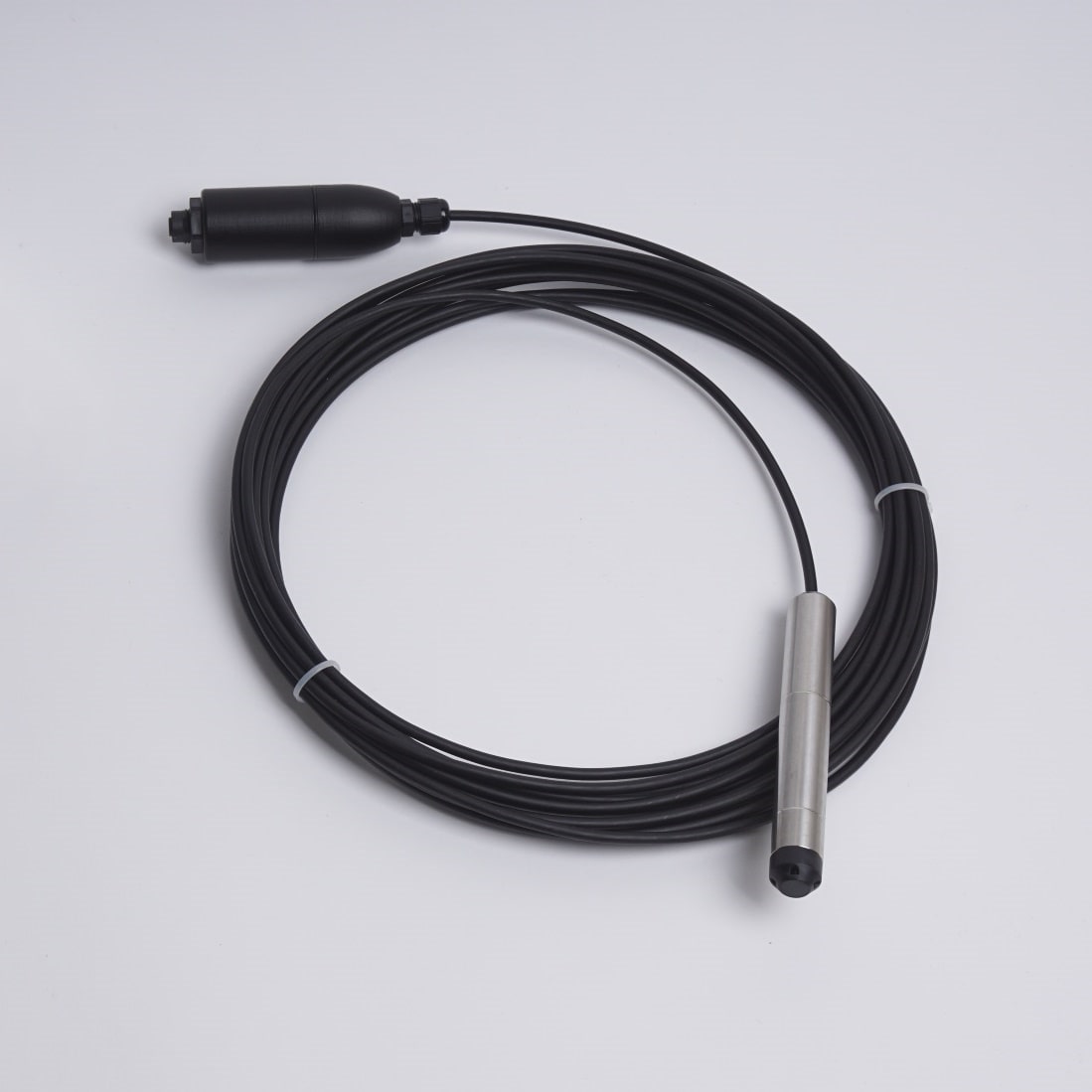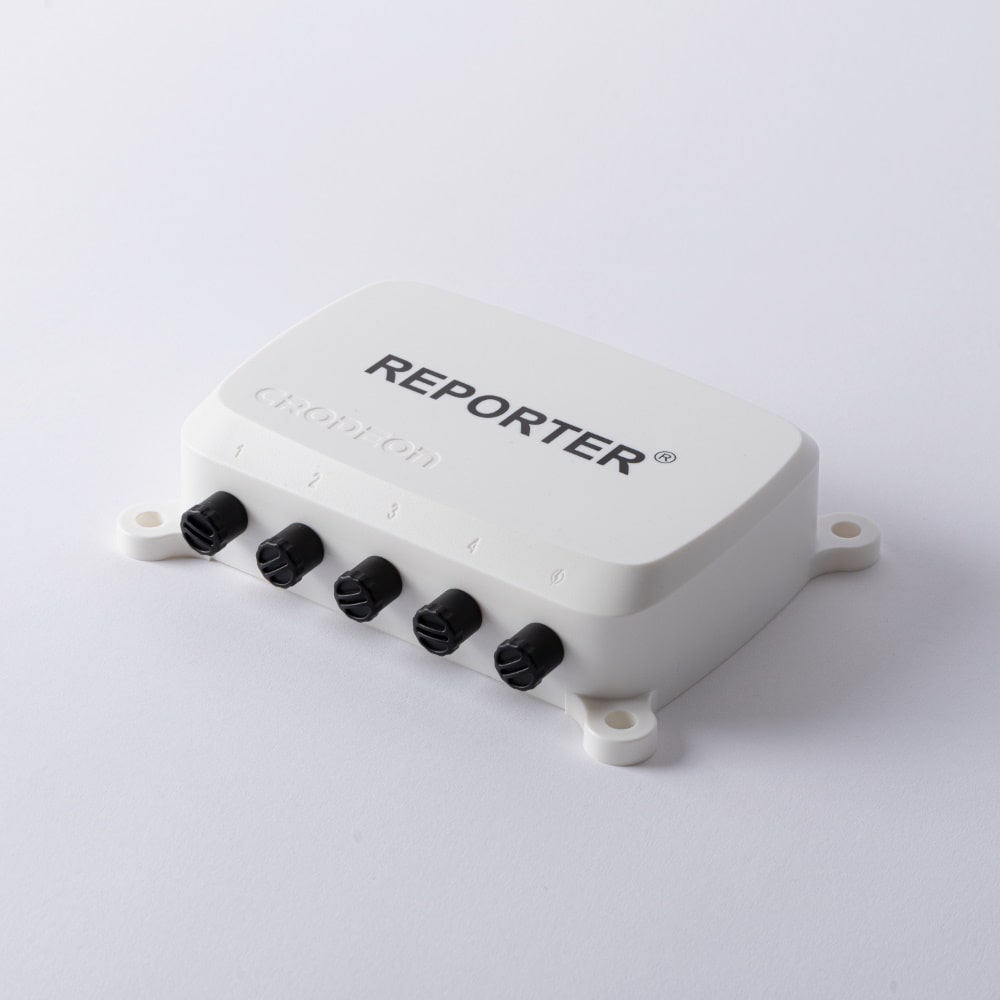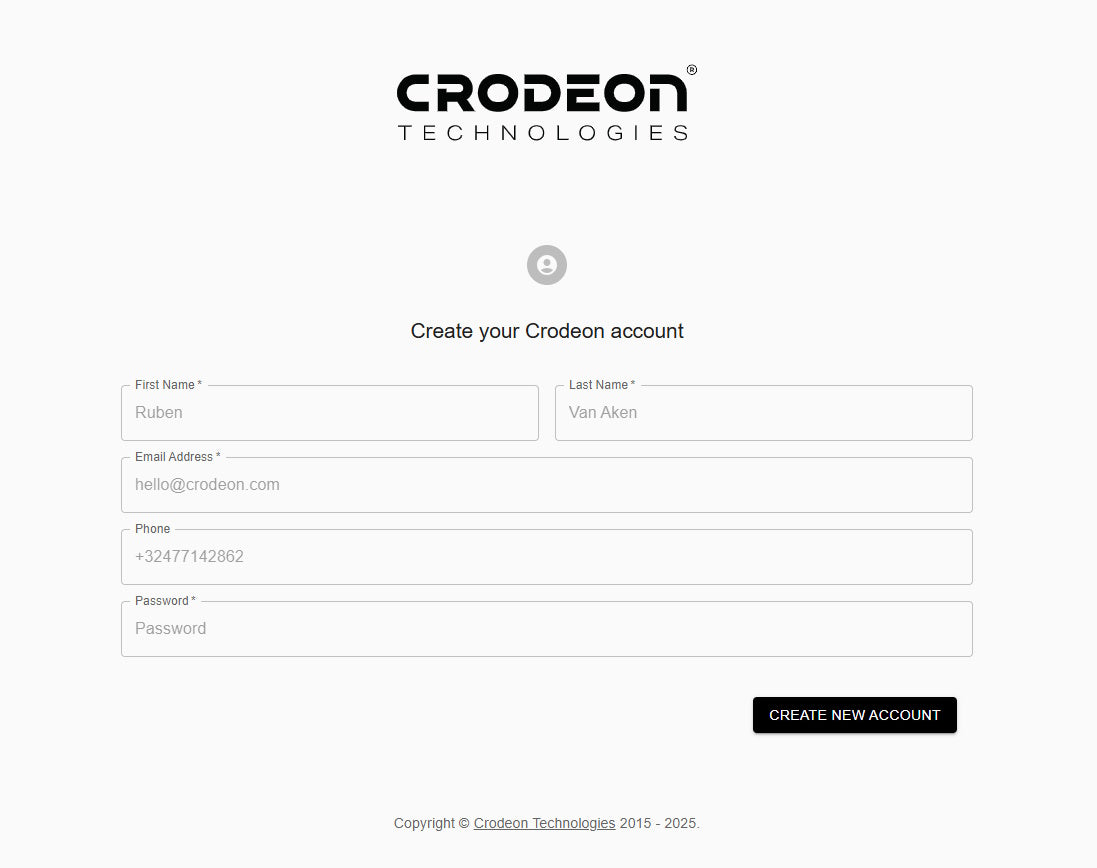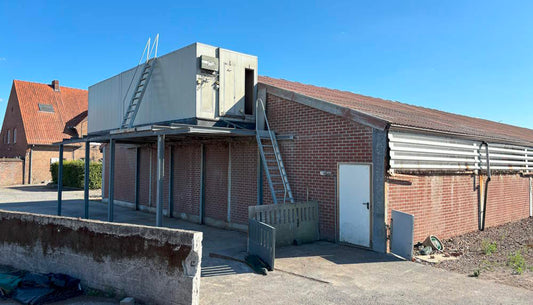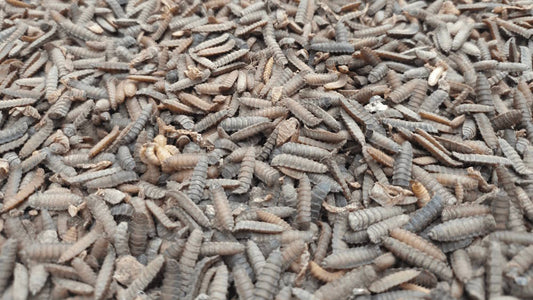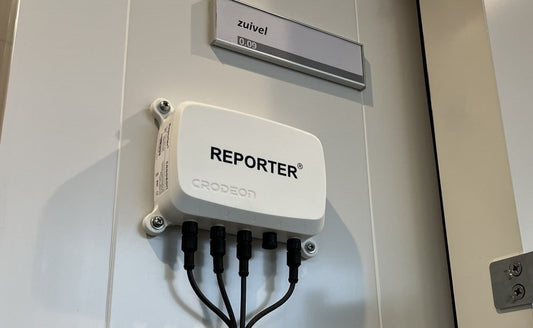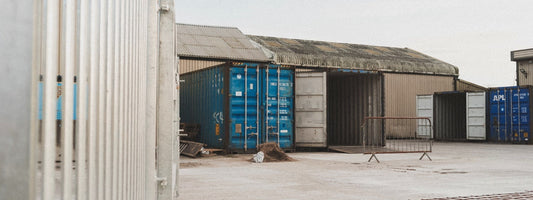Surveillance du niveau de la nappe phréatique sans effort

Nos sols s'assèchent et cela pose problème. En raison de la sécheresse, il devient de plus en plus important de mesurer le niveau des nappes phréatiques. Ces dernières années, la disponibilité des eaux souterraines s'est considérablement réduite. Le niveau de nos nappes phréatiques est trop bas et il n'a souvent pas la possibilité de se stabiliser après un été extrêmement sec. Seule sa surveillance permet d'évaluer la situation dans son intégralité et donc de l'étudier.
La Belgique, par exemple, est classée 22e dans le « Water Risk Indicator », un rapport du World Resources Institute de 2019. Cela s’est avéré vrai puisque 2020 et 2022 ont également été des années historiquement sèches.
Mesurer le niveau des nappes phréatiques est essentielle
Une solution essentielle consistera à mesurer les niveaux d'eau plus souvent et dans un plus grand nombre d'endroits. Il devient de plus en plus évident que les méthodes traditionnelles de mesure manuelle du niveau des nappes phréatiques ne sont plus adaptées.
Dans de nombreux endroits, la mesure de la hauteur des nappes phréatiques est encore effectuée manuellement et de manière peu fréquente. Il n'est pas rare de voir des mesures prises seulement une fois par an, à l'aide d'outils tels qu'un simple mètre ruban. Une méthode très chronophage, qui ne fournit des données qu'à un moment précis. En conséquence, les entreprises et les gouvernements travaillent avec des données potentiellement obsolètes pendant des mois et perdent un temps précieux. Tout cela pour rien, car des appareils modernes de mesure du niveau des nappes phréatiques existent.
Pourquoi surveiller à distance les nappes phréatiques
Les méthodes de mesure du niveau des nappes phréatiques peuvent être simplifiées à l'aide d'approches modernes. Vous disposez ainsi d'un aperçu constant et précis de l'état de vos nappes phréatiques. Les capteurs de niveau submersibles qui mesurent le niveau des nappes phréatiques existent depuis un certain temps.
Le défi a toujours été de pouvoir facilement transmettre ces données de capteurs à un système centralisé dans le cloud. À partir de là, les données peuvent être mises à la disposition d'autres utilisateurs ou être agrégées avec d'autres points de données pour obtenir une image plus précise de la situation.
La mesure du niveau des eaux souterraines étant souvent effectuée dans des endroits isolés, les capteurs sans fil basés sur le GSM sont les mieux adaptés à cette tâche. Si possible, il est également recommandé de construire une installation capable de fonctionner en continu sans alimentation électrique.
Mais il existe une solution : la surveillance à distance des nappes phréatiques à l'aide de l'IoT, qui vous permet de surveiller les mesures en temps réel et d'analyser les données envoyées vers le cloud.

Appareils de mesure du niveau des nappes phréatiques faciles à installer
Chez Crodeon, nous travaillons sur ces défis depuis un certain temps déjà. Notre Reporter est l'un des appareils de mesure du niveau des nappes phréatiques les plus simples du marché européen. Nous utilisons le réseau cellulaire pour une connexion de données sans fil fiable, même dans les endroits les plus reculés. Reporter rend la surveillance à distance des nappes phréatiques aussi simple que possible.
Notre conception à faible consommation d'énergie permet à Reporter et aux capteurs de fonctionner entièrement à l'énergie solaire. Cela signifie qu'aucune alimentation électrique n'est nécessaire et que vous pouvez effectuer des mesures 24 heures sur 24, 7 jours sur 7, dans n'importe quel endroit ayant accès au soleil. Un petit panneau solaire compatible est disponible dans notre boutique. Reporter dispose d'une batterie interne qui se charge rapidement pendant la journée, suffisamment pour durer plusieurs nuits sans soleil.
Dans certains cas, par exemple sur les chantiers de construction, la mesure des eaux souterraines est effectuée en combinaison avec une pompe qui fonctionne de manière périodique. Cela signifie que le courant du réseau est disponible au moins une partie du temps. Une heure de courant du réseau suffit à Reporter pour fonctionner plusieurs jours sur la batterie interne.
Comment mesurer les nappes phréatiques avec Reporter
Pour mesurer facilement le niveau des eaux souterraines :
- Réalisez un forage de 3 cm à la profondeur souhaitée (les options sont : 2,5 m, 10 m, 25 m, 100 m et 250 m)
- Raccordez le capteur à Reporter
- Insérez le capteur de niveau d'eau dans le sol à la profondeur indiquée
- Regardez les données apparaître sur votre PC ou votre smartphone via Crodeon Dashboard
La boutique en ligne Crodeon propose un capteur de niveau d'eau submersible directement compatible avec Reporter. Grâce à la configuration plug & play, la surveillance du niveau des nappes phréatiques est un jeu d'enfant.
Méthodes de mesure du niveau des nappes phréatiques avec d'autres capteurs
Reporter dispose de quatre connecteurs, ce qui vous permet de raccorder librement d'autres capteurs. La mesure du débit d'eau (m³/heure), de la pluie ou de la pression de l'eau, par exemple, peut fournir des informations précieuses en plus de la hauteur des nappes phréatiques. Tous les capteurs sont disponibles dans notre boutique. Les débitmètres peuvent être commandés spécifiquement en fonction de vos besoins.

Alarme de panne de courant et alarme du niveau de nappe phréatique
Reporter a la fonction unique d'envoyer des notifications d'alarme dès qu'un problème survient pendant votre projet de mesure. Peu importe qu'il s'agisse de l'alimentation électrique, du niveau d'eau ou du fonctionnement d'une pompe. Grâce aux paramètres de Reporter, vous pouvez définir des limites ou des seuils pour chaque capteur. Reporter vous avertit si ces limites sont atteintes ou dépassées.
La surveillance de l'alimentation électrique de votre pompe peut être utile pour les ouvriers du bâtiment. Grâce au système d'alarme intégré de Reporter, vous pouvez recevoir des notifications par SMS, e-mail ou appel vocal lorsque la surveillance du niveau des nappes phréatiques ne se déroule pas comme prévu.
Les données sont visualisées sur le Crodeon Dashboard sur votre PC ou votre smartphone. C'est également ici que vous configurez les paramètres d'alarme, l'intervalle de mesure, etc. Nous proposons un accès API pour l'intégration avec d'autres plateformes, ou une simple exportation Excel si vous préférez travailler dans cet outil.

Cerise sur le gâteau : aucune connaissance technique n'est requise pour commencer. La surveillance à distance des nappes phréatiques est simplifiée et accessible. Crodeon propose une solution tout-en-un pour vérifier la situation des nappes phréatiques qui est opérationnelle en quelques minutes. Visitez notre boutique pour établir votre propre devis ou contactez-nous si vous avez d'autres questions.
FAQ sur la façon de mesurer les nappes phréatiques
Qu’est-ce qu’un instrument de surveillance du niveau des nappes phréatiques ?
Les appareils de mesure du niveau des nappes phréatiques sont des instruments qui permettent de mesurer la profondeur (ou la hauteur) à laquelle l'eau est présente dans le sol. Ils permettent de suivre la profondeur à laquelle les plantes doivent développer leurs racines pour atteindre les réserves en profondeur dans le sol. Ils permettent également de mesurer à quelle profondeur on peut s'attendre à trouver de l'eau lors de travaux d'excavation sur un chantier. En combinaison avec un capteur de pluie et des données de température, l'évaporation peut être calculée.
Que puis-je utiliser comme indicateur de niveau d’eau souterraine ?
L’option la plus simple est de faire un forage et de mesurer la profondeur à laquelle l’eau est présente dans ce trou.
Quel capteur est utilisé comme détecteur de niveau d’eau souterraine ?
Le capteur le plus utilisé pour mesurer et détecter le niveau d'eau est un capteur de niveau d'eau submersible.
Quelles sont les différentes méthodes pour surveiller le niveau des nappes phréatiques ?
Traditionnellement, un simple mètre ruban est utilisé pour mesurer manuellement le niveau des nappes phréatiques. Cependant, ces méthodes de mesure du niveau des nappes phréatiques prennent beaucoup de temps. Des méthodes plus récentes et plus modernes de surveillance automatique du niveau des nappes phréatiques permettent de garder un œil sur les eaux souterraines sans nécessiter autant de travail.
Puis-je utiliser un capteur de niveau submersible pour la surveillance du niveau des nappes phréatiques ?
Oui, absolument ! Nous vous recommandons vivement d'utiliser un capteur de niveau submersible dans un forage étroit pour mesurer et surveiller le niveau d'eau.
Que sont les appareils de mesure des nappes phréatiques plug & play ?
Le module de capteur plug & play de Crodeon vous permet de mesurer et de surveiller le niveau des nappes phréatiques. Branchez simplement le capteur de niveau sur l'appareil et il commencera instantanément à mesurer et à diffuser ses données vers la plateforme cloud (Crodeon Dashboard).
Comment mesure-t-on les nappes phréatiques ?
Faites un forage étroit à la profondeur souhaitée, choisissez un capteur qui fonctionne à cette profondeur, fixez le capteur à un module de capteurs, insérez le capteur dans le forage et commencez à mesurer le niveau d'eau.
Un capteur de pression est-il un détecteur de niveau d’eau souterraine ?
Un capteur de niveau submersible mesure en fonction de la pression, mais il n'est pas identique à un capteur de pression. Un capteur de niveau d'eau submersible mesure la quantité d'eau qui se trouve au-dessus de lui. Un capteur de pression est un capteur qui peut être fixé à un tuyau. Ce capteur mesurera à quelle pression le gaz/liquide/vapeur circule dans ce tuyau.
Quel instrument dois-je utiliser pour mesurer le niveau de la nappe phréatique ?
Vous devez d'abord forer un trou à la profondeur souhaitée. Vous pouvez ensuite utiliser un instrument manuel comme un mètre ruban, mais cette technique est chronophage et demande beaucoup de travail. Nous vous recommandons d'utiliser un capteur de niveau submersible et un module de capteurs moderne comme Reporter pour automatiser votre mesure du niveau des nappes phréatiques.

